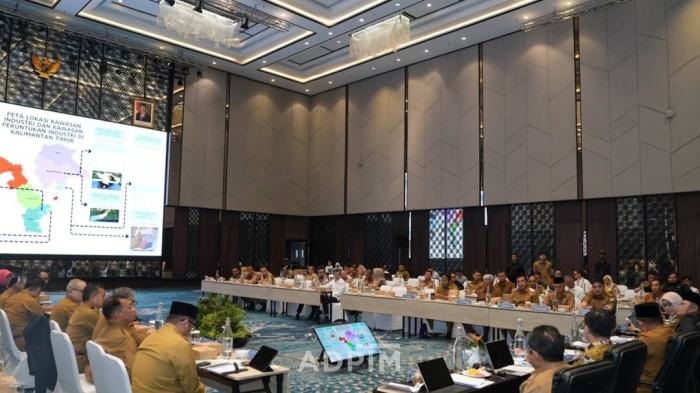News
Investments to East Kalimantan reached Rp43.47t as of Q2 2025
WINDONESIA October 1, 2025 The HLM-RIRU at the Mercure Hotel in Samarinda City, East Kalimantan on Sep. 29, 2025. (Tribun Kaltim/Mohammad Fairoussaniy)
The HLM-RIRU at the Mercure Hotel in Samarinda City, East Kalimantan on Sep. 29, 2025. (Tribun Kaltim/Mohammad Fairoussaniy)
Realized investments to East Kalimantan Province for this year soared to Rp43.47 trillion in the second quarter (Q2) of 2025 out of the Rp79.86 trillion annual target set by the Investment and Downstream Ministry. The East Kalimantan Investment and Integrated One-Stop Services Office (DPMPTSP) is optimistic that the province will achieve said target by the fourth quarter (Q4) of 2025.
The East Kalimantan Provincial Government acknowledged the fact that the province hosted the Nusantara Capital City (IKN) project helped the region attract investors. However, East Kalimantan DPMPTSP Head Fahmi Prima Laksana revealed that several challenges for investment remain, noting the need for strong synergy from all stakeholders to achieve the province's annual investment target.
"We should be grateful for this achievement, but we must not become complacent as there are still challenges that we need to overcome together to make the investment climate in East Kalimantan more welcoming and competitive," Fahmi emphasized at the High-Level Meeting of the East Kalimantan Regional Investor Relations Unit (HLM-RIRU) at the Mercure Hotel in Samarinda City, East Kalimantan on Sep. 29, 2025.
Fahmi highlighted two of the most pressing issues that often make investors think twice about investing, which are the issue of suboptimal accessibility and infrastructure required to support investments as well as the issue in the provision clear and clean (CnC) land.
"Accessibility is still a major complaint from investors. Likewise, the issue of clear and clean land needs to be improved," He said.
In addition, Fahmi noted that other issues which must be addressed include suboptimal information on investment potential at provincial and regency/city levels, along with ineffective coordination between the central, provincial, and regency/city governments.
Investment promotion efforts in East Kalimantan is not yet comprehensive according to the official, and dynamic licensing regulations are not sufficiently adaptive to changes. Moreover, investment incentives are not fully utilized by investors, the low competitiveness of East Kalimantan's leading economic sectors.
Furthermore, there are challenges for investment due to the limited number of local workers with appropriate skills to serve potential investments, along with the low number of supporting tourism services.

